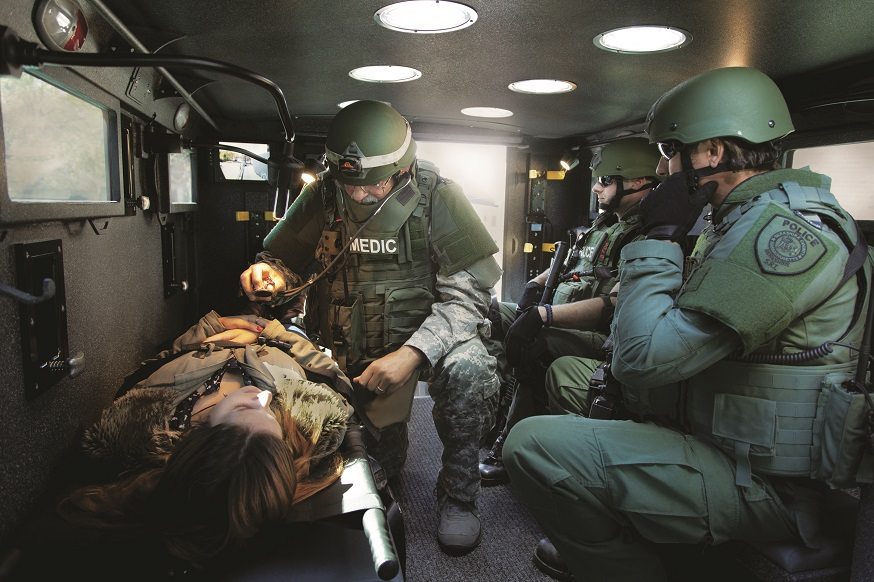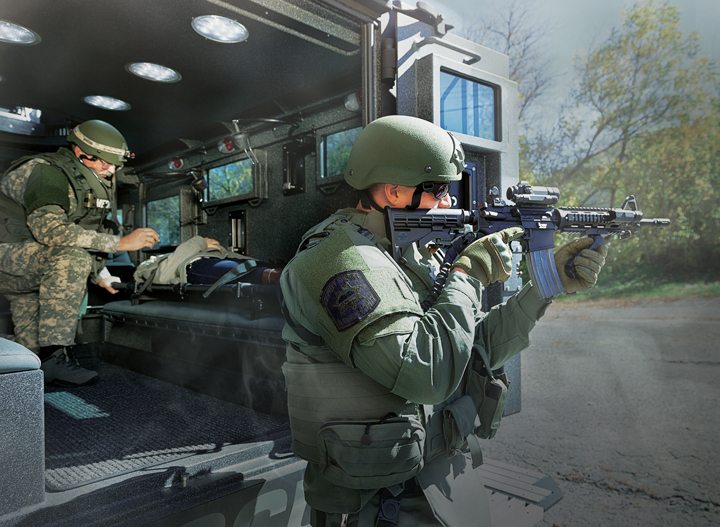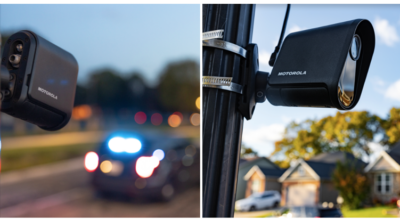
Soldiers put a wounded colleague into a Lenco Bearcat armored car in this advertising photo by an arms manufacturer. (Photo Lenco)
CHATTANOOGA, Tenn., Nov. 18, 2023 – Sheriff Austin Garrett paints a grim picture of crime and disorder in Hamilton County to win a grant to buy a $334,169 armored car to intimidate the public or keep the peace.
By David Tulis / NoogaRadio Network
The Lenco BearCat MedEvac LASD TEMS would include upgrades including run-flat tires and an aid station.
“When you consider the threats of both extremist and domestic terrorism and a sharp rise in political violence in the last 5 years,” he says, “there is no doubt our law enforcement officers desperately need modern day tools to keep our communities safe” (p. 4)
Hamilton County protests against police killings and violence identified military policing as an increasingly grave threat to the citizenry and against the rights of property and liberty.
The 14-page “violent crime intervention fund grant” pleading, in its minimalist style, offers a scene of domestic tranquility involving “high caliber ballistic and projectile weapons used in recent terrorist attacks, allowing our medical personnel to deploy directly into hot zones to respond to attacks and help the injured.” In a public disorder, the filing says, “The vehicle can carry up to 12 operators in full tactical gear and can fit up to 20 civilians in need of rescue or evacuation from violent crimes.”
The City of Chattanooga suffers from a very high violent crime rate that ranks it as one of the “Top 100 Most Dangerous Cities in the USA” according to various media outlets and crime reports. There are numerous examples of critical infrastructure, soft targets, and crowded places in and around Hamilton County and our partner agencies which are subject to increased levels of violent crime. HCSO is the primary responder or has in place a Mutual-Aid agreements with partner agencies to respond to these venues to investigate, deter, and respond to violent crimes occurring at these locations. Violent crime occurring at any of these locations has regional, national, and international complications.
(p. 2)
The armored car will suppress crime at any of the many public events Sheriff Garrett cites.
Most notably, the use of the armored vehicle in conjunction with event operational planning will be staged strategically, within close proximity, to the venues and events listed in section A.1. The vehicle will be used and aid with law enforcement’s ability to prevent and deter violent crimes such as, aggravated assaults and robberies from occurring in relation to these areas.
(p. 3)
Armored car grant request by Austin Garrett
The threat suppression effect is gained by “placing the vehicle at events held by these venues to provide a visual display of law enforcement’s level of preparedness and response capabilities” by being “highly visible. *** Having the vehicles staged close to such events and venues will also aid in the rapid response to violent crimes, thus reducing the act of aggression and saving lives by providing the much needed and appropriate equipment to respond.”

This snap in an ad by armored car Lenco puts the product into combat situations as a pitch to police and sheriff’s department to buy now. (Photo Lenco)
Mr. Garrett says citizens are aiming more muzzles at cops and deputies and not missing. “The increase in attacks specifically targeting law enforcement officers and soft target public venues only emphasizes the need for such an armored vehicle,” citing a police union statement that 323 officers have been “shot in the line of duty” as of Dec. 21, 2022, “up 7% from the same date in 2020 and up 13% from the same date in 2019,” including 87 ambushes resulting in 124 officers hit by bullets, with 31 dying (p4).
Will an armored car stop ambushing assailants? The petition cites an FBI report that “identified a disturbing and growing trend of attackers who are motivated by a desire to kill a law enforcement officer. This motivation, the report concludes, is from a ‘singular narrative that portrays the officer as guilty in traditional and social media and the subject as the victim.’”

